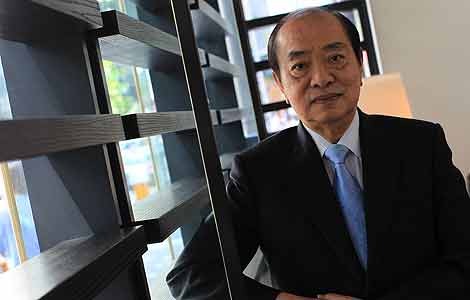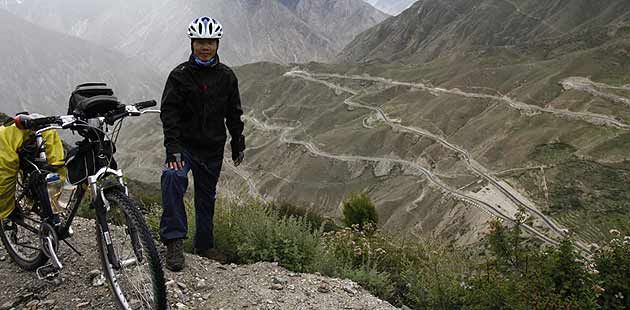Cradle of China's democratic revolution
Updated: 2011-10-09 20:28
(Xinhua)
|
|||||||||||
GUANGZHOU - The village of Cuiheng, located in the city of Zhongshan in South China's Guangdong province, could very well be described as the birthplace of China's democratic revolution. The village is home to the residence of Sun Yat-sen, who led the 1911 Revolution and ended 2,000 years of imperial rule in China.
Built in 1892, the two-story residence was designed by Sun himself after he returned from studying overseas.
Sun lived there from 1892 to 1895, practicing medicine and engaging in revolutionary activities in the Pearl River Delta. He also stayed there for some time after resigning from the presidency in 1912, according to historical documents.
Nowadays, there are many stories about Sun' s childhood, his family and his early education in the village.
Sun was born in 1866 to a family of peasants. Although Sun rarely referred to his childhood during his lifetime, his wife Soong Ching-ling wrote in her memoirs that Sun grew up in a poor family who lived in a thatched hut, according to Tan Jinye, a staff member of the Museum of the Former Residence of Sun Yat-sen.
Sun cut firewood and herded cattle with his sister Sun Miaoqian at the tender age of six, as his family had a difficult time making ends meet.
"He got his first pair of shoes when he was 15. The only food his family could afford back then were sweet potatoes," Tan said, referring to Soong's memoirs.
The difficult experiences Sun dealt with during his childhood left a deep impression on him, according to Xiao Runjun, curator of the Museum of Former Residence of Sun Yat-sen.
Feng Guanshuang, a villager from Cuiheng who joined the Taiping Rebellion, the largest peasant uprising in Chinese history, used to tell stories about the rebellion to children under a banyan tree in front of Sun's home.
Feng detailed how the rebellion, led by Hong Xiuquan and his insurrectionary army, fought in 18 provinces for 14 years, dealing a blow to China's feudal dynasty and to foreign invaders. Feng's stories aroused Sun's admiration for Hong Xiuquan.
Foot-binding for women was an old tradition in Chinese feudal society, Sun grew to hate the custom after seeing his younger sister Sun Qiuqi suffer from it. These and other childhood memories stirred Sun's desire to leave his hometown to see and learn more about the outside world.
Later experiences in Cuiheng
In 1879, Sun went to live with his brother in Honolulu, where the 13-year-old boy received a Western education and learned English.
When he returned home in 1883, Sun found he was incompatible with the conservative atmosphere in Cuiheng.
He met up with his childhood friend Lu Hao-tung at a temple in the village. Dissatisfied with the villagers' ancient healing methods, they broke a statue in the temple, incurring the wrath of the other villagers. Sun subsequently fled to Hong Kong, where he furthered his education before starting a career in medicine in 1892.
In 1894, Sun returned to Cuiheng again. He wrote a letter to Li Hongzhang, a village official, proposing ways in which China could gain strength. However, his efforts were not repaid; Sun left Cuiheng once again to try to convince expatriate Chinese to fight for a revolution in China.
Today, Sun's residence functions as part of the Former Residence of Sun Yat-sen Memorial Museum, which attracts numerous visitors from all over the world each year, Xiao said.
"I was born in the city of Zhongshan and I have developed great respect and admiration toward Sun Yat-sen since I was a child," said Liu Yi, a 30-year-old woman visiting the museum with her four-year-old son.
"As we all know, this year marks the 100th anniversary of the 1911 Revolution. I want to allow my son to learn the childhood stories of Sun Yat-sen and tell him not to forget history," Liu said.
Related Stories
Sun Yat-sen-led revolution commemorated in China 2011-10-02 22:41
Sun Yat-sen's Portrait installed in Beijing 2011-10-01 18:00
Tour of Sun Yat Sen's Trail launched in Macao 2011-09-10 19:54
Jiang Zemin attends 1911 Revolution centenary 2011-10-09 10:43
Hot Topics
Libya conflict, Gaddafi, Oil spill, Palace Museum scandal, Inflation, Japan's new PM, Trapped miners, Mooncake tax, Weekly photos, Hurricane Irene
Editor's Picks

|

|

|

|

|

|






